Technical Regulations on Restriction of Hazardous Substances in Electrical and Electronic Equipment TR 037/2016 (“the EAEU RoHS” or the “Russian RoHS” or "Russia RoHS") was adopted by Decision No. 113 of 18 October 2016.
The two-year transitional period ends on 1 March 2020 when the requirements of the EAEU RoHS become mandatory. As of 1 March 2020, all products in scope of the Russian RoHS that are placed on the EAEU market must comply with its requirements: have a declaration of conformity with the EAEU RoHS and the EAC marking (the unified EAEU mark of conformity).
Most electrical and electronic products placed on the EAEU market will already have the EAC mark due to the requirements of other Technical Regulations, such as Low Voltage Equipment TR and EMC TR. However, products that were not subject to either Low Voltage or EMC requirements, such as cables, will need an additional EAC marking due to the EAEU RoHS requirements.
The EAEU (Russian) RoHS applies to the following product groups:
- IT equipment and computers (including notebooks, keyboards, mouse, joysticks, goggles, etc.);
- telecom equipment;
- office equipment;
- domestic devices and appliances (dishwashers, washing machines, tumble dryers, vacuum cleaners, air conditioners etc.);
- household equipment, such as “warm floor”, water heaters, electrical heaters, etc.;
- external power supplies;
- cables, cords and wires;
- lighting devices and equipment;
- electrical tools;
- sports and leisure equipment,
- vending machines and “fruit machines”,
- switches, plugs and adapters;
- fire alarm detectors;
- electrical musical instruments; etc.
The EAEU (Russia) RoHS does not apply to:
-electrical toys;
-photovoltaic panels integrated into electrical and electronic equipment;
-electrical equipment intended for use in space;
-electrical equipment intended exclusively for the use on transport (road, water, underground or air);
-electrical batteries and accumulators, including those integrated into electrical equipment;
-measuring devices;
-medical devices.
The EAEU RoHS sets out concentration limits for certain specified hazardous substances in electronic and electrical products. Annex 2 sets out the limits for lead, cadmium, mercury, hexavalent chromium, polybrominated diphenyls and polybrominated diphenylethers. The limits are the same as in the EU RoHS. Notably, the EAEU (Russia) RoHS is not yet regulating phthalates.
Conformity assessment for compliance with the EAEU RoHS is to be done on the basis of test reports done by accredited EAEU laboratories. It might be possible in future to use EU or other test reports.





